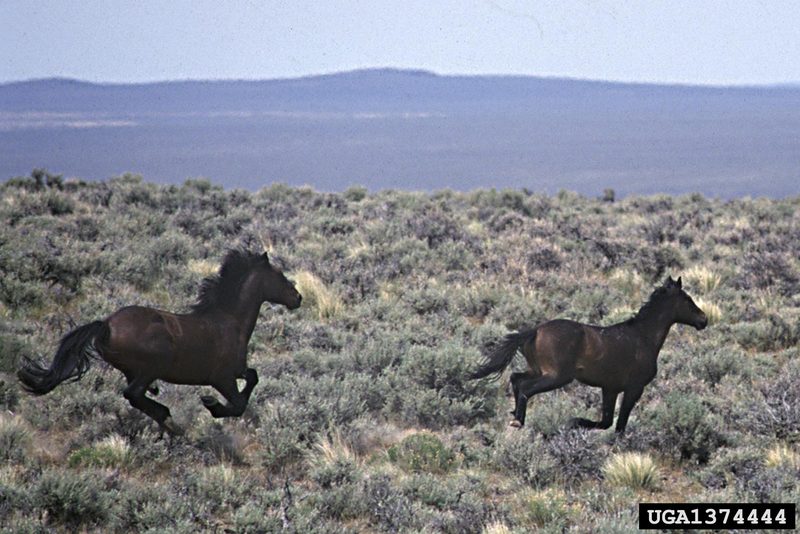|
| Query: equus caballus | Result: 9th of 356 | |
Wild Horse (Equus caballus) <!--말(야생마)-->
| Subject: | Wild Horse (Equus caballus)
| | Poster: | Phoby (phoby@notmyphoto.com)
| |

| Resolution: 1536x1025
File Size: 253228 Bytes
Upload Date: 2006:02:21 14:52:11
|
wild horse
Mammalia > Perissodactyla > Equidae
Equus caballus Linnaeus, 1758
Photographer: Terry Spivey, USDA Forest Service
Description: Running
Image Citation:
Terry Spivey, USDA Forest Service, www.forestryimages.org
Image Use:
This image may be copied and used, in whole or in part, for any non-profit, educational purpose provided that all reproductions bear an appropriate credit. Any commercial or other use of the image requires the written permission of the photographer or contact organization, and Forestry Images.
|
Comments |
|---|
| | wildthing |
|
Equus caballus
(horse)
Geographic Range
Original populations were once found in the steppe zone from Poland to Mongolia. Now domesticated, horses occur throughout the world and in feral populations in some areas.
Habitat
Most horses today are domesticated, but there are some feral populations that live in diverse habitats. Along the coastline of France and Spain, the Outer Bank Islands of North Carolina, the Great Basin of the western U.S., and in different areas of Australia for example.
Terrestrial Biomes:
savanna or grassland ; forest .
Physical Description
Mass
300 to 2000 kg
(660 to 4400 lbs)
Horses have been so strongly bred by humans that there is extensive variability in their size and weight. The general body pattern is that of long limbs, barrel shaped body, and a long neck supporting a large head. Vision and hearing are key senses for these animals, as suggested by their large eyes and ears. Coloration is also hightly variable due to breeding, and individuals range from pure white, tan, brown or black to patches of oranges and browns on white. The tail is relatively short but has long hairs coming off it that frequently reach the ground. The tail is often used as an "extra hand" to swat insects. There is also long hair along the neck and forehead (the mane and forelock).
Some key physical features:
endothermic ; bilateral symmetry .
Reproduction
Horses are seasonal breeders, but during the breeding season come into estrus monthly until impregnated. Birth, usually of one foal occurs after an 11 month gestation period. In about 15-25 minutes the foal is able to follow its mother around, and it stays close to her side for the first few days of life. Weaning occurs after approximately 7 months, but if the female doesn't become pregnant yearlings have been observed to occasionally nurse off their mothers.
Key reproductive features:
gonochoric/gonochoristic/dioecious (sexes separate); sexual .
Behavior
Horses have a harem social system, where one dominant male has a group of several females and their offspring. There is current debate as to whether both male and female juveniles leave the natal group, or if only males leave. Upon leaving, females join another herd, while males join a bachelor herd. When mature, males are solitary and attempt to take over a harem or steal females.
Key behaviors:
motile .
Food Habits
Horses are natural grazers of grasslands, but often have domestic diets with grain and hay. Horses graze while walking slowly, pulling off a mouthful every few steps.
Economic Importance for Humans: Positive
Domestic horses are arguably the most important animal that has been domesticated. Long been used as a means of transportation, pleasure, work, and even war horses have been involved in much of human history.
Conservation Status
Domestic horse breeds are numerous and plentiful. Feral populations are mostly small in number and threatened by human encroachment. The one true wild horse Przewalski's horse is considered extinct in the wild by some, and at best is alive only through captive breeding programs.
Kingdom Animalia Phylum Chordata Subphylum Vertebrata Class Mammalia Order Perissodactyla Family Equidae Species Equus caballus |
^o^
Animal Pictures Archive for smart phones
^o^
|
|
|